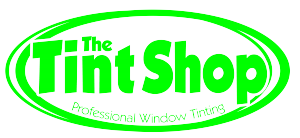
Whether applied to the windows of an automobile or other vehicle, a home, or a business, window tint film is an inexpensive, attractive, and convenient way to improve the quality of interior space. Window tinting film promotes privacy while still allowing plenty of light and visibility inside. It cuts down on glare. It helps keep the heat out during the summer months but keeps it in during the winter, thus reducing the costs of air conditioning and heating. In addition to blocking sunlight, window-tinting film can also block dangerous ultraviolet rays.
Not all types of window tint film, however, are equally effective in fulfilling these purposes. So it’s well worth the effort to consider the basic categories of window-tinting film. There are, in fact, four main types of film, differing in terms of the quality of their material, effectiveness, and cost. How does one go about selecting among them? Let's take a moment to explore the options below!

Dyed film, is the most economical type of window-tinting film – least expensive and rather less functional than the others – blocks light rays by the addition of dye to the film; the dye is placed in a layer next to the adhesive, and then applied to the window. Solar heat is absorbed by the dye in the film, thus preventing some of the heat from entering through the window. However, dyed window-tinting film is used primarily for appearance.
From the outside, dyed film looks flat and opaque, providing some privacy while still permitting visibility from the interior; when used on the windows of an automobile, it will appear black. The dye does tend to fade with time, however. The heat-reduction provided by most varieties of dyed film is not particularly high.

Metallized film, like dyed film, keeps heat away from interior space by reflecting it away; in the case of metallized film, this is done by very small metallic particles – invisible to the eye – embedded in the film. This metallic content strengthens the window as well; in the case of a vehicle, the window will be that much more shatter-resistant when metallized film is used. Metallized window-tinting film creates a shiny appearance from the outside. It is more resistant to scratches than dyed film. When used in a vehicle, however, one drawback of metallized film is the fact that its metallic content has a tendency to interfere with cell phone and GPS transmission, not to mention radio reception.

Carbon film, delivers rather better results. Carbon film doesn’t have any metal in it, so the issue with cell phones and radio transmission doesn’t arise when it is used. Carbon window-tinting film is dark and matte-finished, so it provides a tasteful option on windows. The carbon content of the film blocks about 40% of the infrared light (the kind that causes warmth) that enters through the windows. Carbon window-tinting film is about as effective as other varieties in blocking heat; its use will effectively cool inside space while also helping prevent fading to upholstery. Thus the air conditioning will not need to work so hard to cool the space during the summer, nor will the heating system be so heavily impacted during the winter. Unlike dyed film, carbon film will not fade with time.

Ceramic film, is the highest quality of window tint film, and also the most expensive, contains neither metal, dye, nor carbon, but instead a kind of ceramic particle that is both nonconductive and nonmetallic. Ceramic film has only recently appeared on the market, but has already proven its worth in terms of performance and reliability. Ceramic window-tinting film cuts from 60 to 98% of the solar heat that enters through the windows in the form of infrared light, while allowing maximum visibility both by day and night. Like carbon film, ceramic window-tinting film allows maximum efficiency in the functioning of radios, cell phones, GPS systems, and all other such devices being operated from inside the protected space.
It surpasses the other types in its resistance to glare and fading, and renders windows highly shatter-proof. Ceramic film is also most effective in its blocking of ultraviolet light from the interior; in the case of ultraviolet light (the kind of light rays that contribute to sunburn and skin cancer), ceramic window-tinting film can block up to 99% from entering the interior.

Contrary to the common belief, factory tint doesn’t deflect heat or protect from UVA/UVB RAYS. It might seem counter-intuitive to apply window films to a vehicle that came with dark windows from the factory.
The fact of the matter is that darkened windows alone won’t give you the results you are looking for. One of the most frequent questions we get asked about automotive window tinting is to explain the difference between factory tinted windows and aftermarket window tinting.
What are the benefits to aftermarket automotive window film?
The truth is the factory tinted glass doesn’t provide nearly the same benefit as professionally installed window film. Tint from the factory is really more of cosmetic enhancement, and while it slightly reduces glare, factory tint doesn’t deflect heat or protect the vehicle occupants from damaging ultraviolet UVA and UVB rays.

